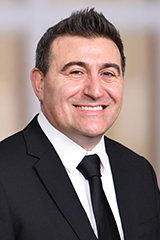Iran Escalation: Experts Available This Week
If you’re covering the latest developments with Iran and their impact on Israel, the U.S., China, Russia, global supply chains, and more, Syracuse University faculty experts are available for interviews this week. Below, you’ll find a list of experts along…


 “Raw materials for the manufacture of the vaccine may prove to be the biggest obstacle in the effort to get needles in arms. Some vaccines include a boosting agent or adjuvant which is found in shark liver oil, otherwise known as squalene. Other vaccines use an alternate squalene adjuvant that comes from the bark of a soapbox tree, found primarily in Chile. There are finite supplies of both, and both are being utilized by pharmaceutical companies working hard to develop an effective vaccine. This is an example of my concerns relating to the “production” issues. If we consider the supply chain as a sequence of “production-storage-and-distribution,” I view production capability to be the most critical component/most elevated challenge in vaccine supply chain concerns. This is not to say that logistics is simple, but there are bigger concerns in our ability to produce a sufficient number of vaccines that have proven safety and efficacy in a timely manner.” Prof. Burak Kazaz, Whitman School at Syracuse University
“Raw materials for the manufacture of the vaccine may prove to be the biggest obstacle in the effort to get needles in arms. Some vaccines include a boosting agent or adjuvant which is found in shark liver oil, otherwise known as squalene. Other vaccines use an alternate squalene adjuvant that comes from the bark of a soapbox tree, found primarily in Chile. There are finite supplies of both, and both are being utilized by pharmaceutical companies working hard to develop an effective vaccine. This is an example of my concerns relating to the “production” issues. If we consider the supply chain as a sequence of “production-storage-and-distribution,” I view production capability to be the most critical component/most elevated challenge in vaccine supply chain concerns. This is not to say that logistics is simple, but there are bigger concerns in our ability to produce a sufficient number of vaccines that have proven safety and efficacy in a timely manner.” Prof. Burak Kazaz, Whitman School at Syracuse University